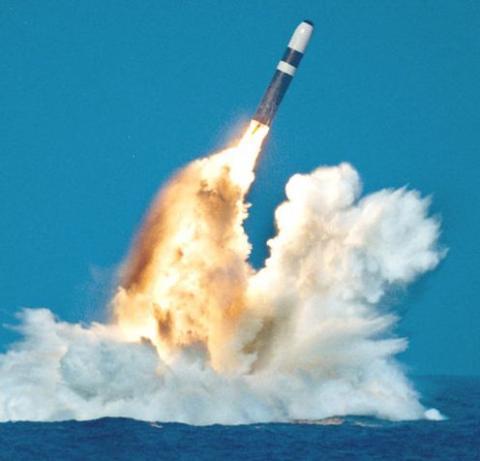India’s nuclear test of 1974, the so-called Peaceful Nuclear Explosion (PNE), by diverting peaceful nuclear technology to military developments was the watershed moment in the history of South Asia. India’s nuclear test was the first case of horizontal nuclear proliferation since the formal inception of Nuclear Nonproliferation Treaty (NPT) in 1967. India detonated a nuclear weapon at Pokhran-1 test site using plutonium, believed to have been produced by the Canadian and US-supplied CIRUS reactor.
Despite international sanctions and widespread condemnation over its nuclear test, India, did not stop there. It, yet again, demonstrated its nuclear capability in May 1998 by conducting multiple nuclear tests. It not only forced Pakistan to follow suit but also pushed South Asia towards a nuclear arms race. The overt nuclearization of India offered two major challenges to the proponents of nuclear arms control: how to deal with a nuclear India which is also outside the NPT, and how to restrict India’s vertical nuclear proliferation post-1998?
Soon after its first test, both Canada and the USA suspended their peaceful nuclear cooperation with India. Following the test, Canadian personnel working in India on another reactor were called back and also the Canadian government further tightened its nuclear policies. The USA also imposed sanctions on India, which made her a nuclear pariah. Despite severe global pressure, India did not roll back its nuclear programme and refused to sign the NPT.
The second challenge proved a daunting task for the international community. Despite multiple efforts to restrict India from vertical proliferation, its nuclear arsenal not only modernized technically but also significantly increased in terms of warheads. According to the Stockholm International Peace Research Institute (SIPRI), India has over 150 nuclear weapons and its stockpile continues to grow rapidly. However, this figure does not take India’s three-stage unsafeguarded nuclear power programme into account.
Nuclear weapons in India are literally in the wrong hands. There is a need of greater attention from the international community to address India’s nuclear madness as Indian nuclear capability is fast becoming a global migraine.
According to a Belfer Center report, over the next decade, India will supersede China, France, and the UK in weapons stockpiles to become the third behind the USA and Russia. The study further posits that India is already working to install more than five fast breeder reactors which will increase its weapons-grade plutonium production capacity by 20 times (700 kg) every year. Likewise, expansion in its centrifuge enrichment program will enable it to increase production of highly enriched uranium for nuclear weapons to 160 kg every year, which means that India can build approximately 80 to 90 plutonium-based and 7 to 8 uranium-based weapons annually. That would have disastrous ramification for South Asian stability in particular, and the world at large.
While world powers somehow managed horizontal nuclear proliferation by introducing NPT, vertical proliferation remains the biggest challenge for the arms control instruments and mechanisms. India currently has the world’s fastest growing nuclear weapons programme, its nuclear arsenal increasing by leaps and bounds. Despite global pressure, India has refused to participate in arms control measures.
At the moment, the rate of India’s nuclear modernization is unmatchable. India is massively spending in modernization of its conventional forces and war machinery. According to the SIPRI, India was the world’s largest arms importer from 1990 to 2019. Its defense budget grew 259 percent over a 30-year period and 37 percent over the decade (2010-19). Besides this massive spending on conventional weapons, India is also splurging on nuclear weapons. It is not modernizing its nuclear arsenal to deter but to fight a nuclear war. India, therefore, has counterforce temptation, which is a doomsday scenario for South Asia.
Today’s India is headed by an RSS veteran, who is the sole custodian of India’s nuclear weapons, with a history of threatening Pakistan with them. Prime Minister Narendra Modi threatened Pakistan, saying that India had not kept its nuclear weapons for Diwali fireworks. This was not the first time he had threatened Pakistan with nuclear weapons. In Balakot crisis, Modi had threatened Pakistan with ‘Qatal ki raat (a night of slaughter),’ referring to use of nuclear weapons by India.
This is the level of India’s strategic behavior towards its nuclear capability. Nuclear weapons in India are literally in the wrong hands. There is a need of greater attention from international community to address India’s nuclear madness as Indian nuclear capability is fast becoming a global migraine.
























India must do everything to increase the nuclear stockpile and number of nuclear warheads. India must also at the same time commission fast breeder reactors and develop more nuclear delivery mechanisms. Last but definitely not the least, india must give up no first use policy and use it’s satellites to carry out preemptive nuclear strikes if the need be.
India is no match for your, compare with some equivalent country i.e Somalia, Sudan etc
RSS man controlling nuclear weapons is a billion times better than a radicalised Jihadi who sees non muslims as kafirs.
Ananya Shahid, forget being India in WRONG hands. You should be proud of Pakistan that it is in RIGHT hands. 😆😆😆 Your crying for number of Indian nuclear warheads, without describing the nuclear warheads and proliferation record of China and Pakistan (being Expansionist and Terroristan), is laughable. Be cool in jungle and enjoy Indian developments. 😀